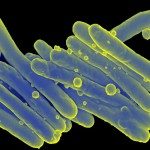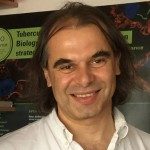Link to Pubmed [PMID] – 19696503
Genome Dyn 2009;6:198-210
Among the 130 species that constitute the genus Mycobacterium, the great majority are harmless saprophytes. However, a few species have very efficiently adapted to a pathogenic lifestyle. Among them are two of the most important human pathogens, Mycobacterium tuberculosis and Mycobacterium leprae, and one emerging pathogen, Mycobacterium ulcerans. Their slow growth, virulence for humans and particular physiology make these organisms very difficult to work with, however the need to develop new strategies in the fight against these pathogens requires a clear understanding of their genetic and physiological repertoires and the mechanisms that have contributed to their evolutionary success. The rapid development of mycobacterial genomics following the completion of the Mycobacterium tuberculosis genome sequence provides now the basis for finding the important factors distinguishing pathogens and non-pathogens. In this chapter we will therefore present some of the major insights that have been gained from recent studies, with focus on the roles played by various evolutionary processes in shaping the structure of mycobacterial genomes and pathogen populations.

